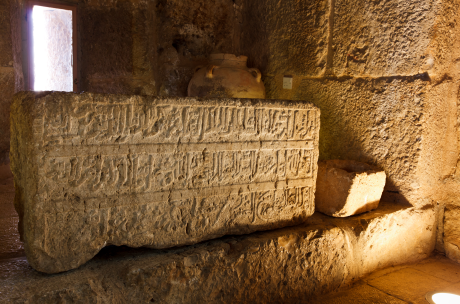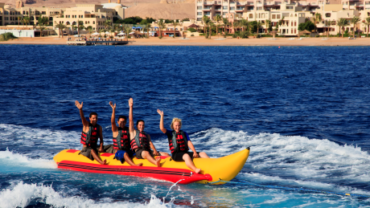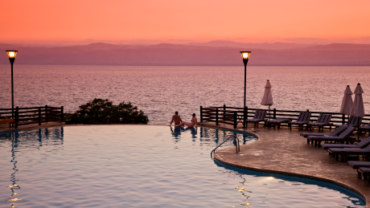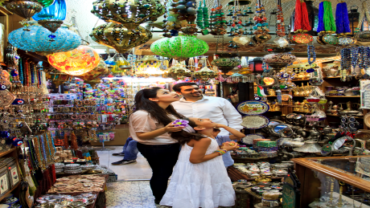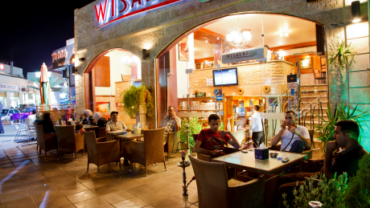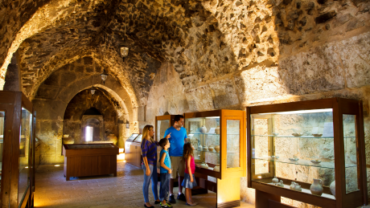Religion & Faith Tourism in Jordan
The land of modern day Jordan has been the site of significant events in the history of Christianity spanning across centuries throughout the New and Old Testaments. It is because of this religious signifcance that sites all around Jordan have been designated as pilgrimage sites and have been visited by Pope John Paul VI, Pope John Paul II, Pope Benedict XVI and Pope Francis within the past half century. As a land dedicated to religious coexistence, the country of Jordan maintains and protects these religious sites for the use of pilgrims from all around the world.
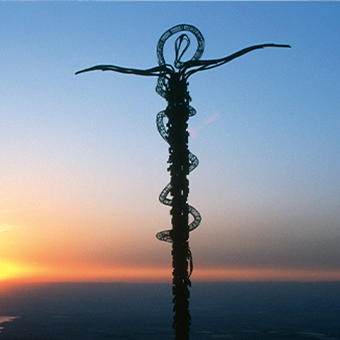
Madaba
Mount Nebo
From Mount Nebo’s windswept promontory, overlooking the Dead Sea, the Jordan River Valley, Jericho and the distant hills of Jerusalem, Moses viewed the Holy Land of Canaan that he would never enter. He died and was buried in Moab, “in the valley opposite Beth-Peor” (Deuteronomy 34:6). Mount Nebo became a place of pilgrimage for early Christians from Jerusalem and a small church was built there in the 4th century to commemorate the end of Moses’ life. Some of the stones from that church remain in their original place in the wall around the apse area. The church was subsequently expanded in the 5th and 6th centuries into the present-day large basilica with its stunning collection of Byzantine mosaics.
The Serpentine Cross, which stands just outside the sanctuary, is symbolic of the bronze (or brazen) serpent taken by Moses into the desert and the cross upon which Jesus was crucified.
Mukawir – Machareus
The 1st century AD Roman-Jewish historian, Josephus, identifies the awe-inspiring site of Mukawir (Machaerus) as the palace/fort of Herod, who was the Roman-appointed ruler over the region during the life of Jesus Christ. It was here, at this hilltop fortified palace, overlooking the Dead Sea region that Herod Antipas, the son of Herod, imprisoned and beheaded John the Baptist after Salome’s fateful dance.
Ajlun
Tel Mar Elias – St. Elijah’s Hill
Associated with the Prophet Elijah, Tall Mar Elias is very close to the ruins of a village known as Listib. It is believed that this place was formerly Tishbi, the home of Elijah, a native of Gilias in Tranjordan (2 Kings 17: I). The fact that this is a religious site is substantiated by the two churches that were built on the Tall (hilltop) at the end of the Byzantine period. Elijah is known as the prophet Elias in Arabic. The Koran calls him “an honorable man” and a “messenger of God”. It also says “we left mention of him among later men”, which refers to Elijah’s association with Moses, John the Baptist and Jesus. The site at Tall Mar Elias includes extensive architectural remains that are scattered across the summit of the hill that rises above Listib, from the southeast.
Anjara
It is believed that Jesus Christ, his disciples, and the Virgin Mary, passed through Anjara once and rested in a cave there during a journey between the Sea of Galilee, the Decapolis cities, Bethany Beyond the Jordan and Jerusalem. The cave in Anjara has long been a holy place for pilgrims and has now been commemorated with a modern shrine, the Church of Our Lady of the Mountain. The cave was also designated by the Catholic Churches of the Middle East as one of the five pilgrimage sites for the year 2000.
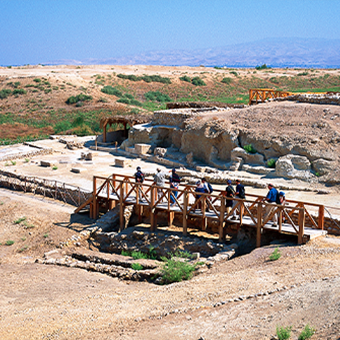
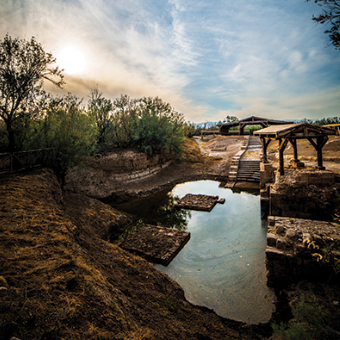
Baptism/ Bethany beyond the Jordan/ Al-Maghtas
The site of John the Baptist’s settlement at Bethany Beyond the Jordan, where Jesus was baptized, has long been known from the Bible (John 1:28 and 10:40) and from the Byzantine and medieval texts. The site has now been identified on the east bank of the Jordan River, in the Hashemite Kingdom of Jordan, and is being systematically surveyed, excavated, restored, and prepared to receive pilgrims and visitors. Bethany Beyond the Jordan is located half an hour by car from the Jordanian capital Amman. The Bethany area sites formed part of the early Christian pilgrimage route between Jerusalem, the Jordan River, and Mount Nebo.



